|
14. Pyrgus armoricanus (Oberthür 1910) / Oberthür’s grizzled skipper / Hesperiidae –Pyrginae
NL: oogvlekdikkopje, Bretons spikkeldikkopje / D: Zweibrütiger Dickkopffalter / F: hespérie des potentilles, armoricain
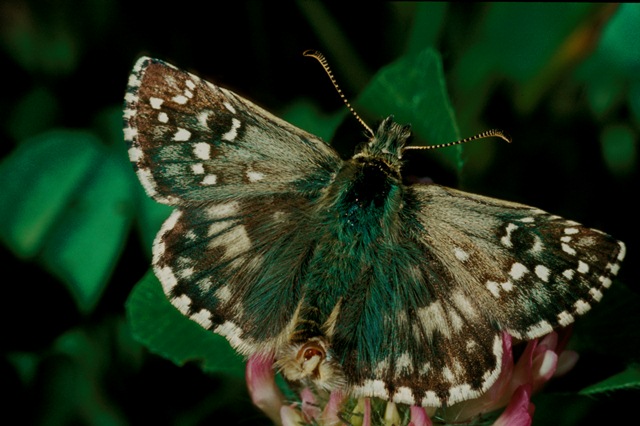 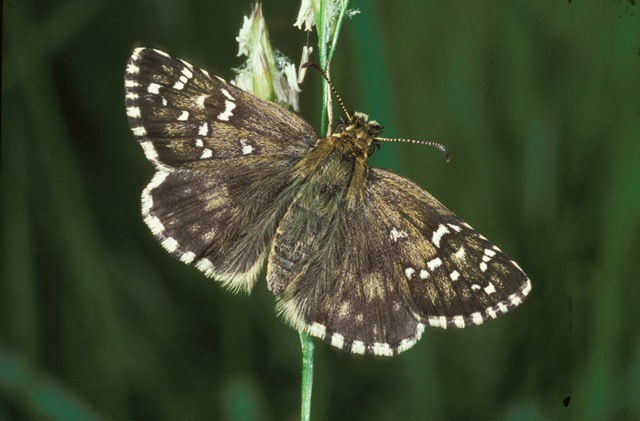 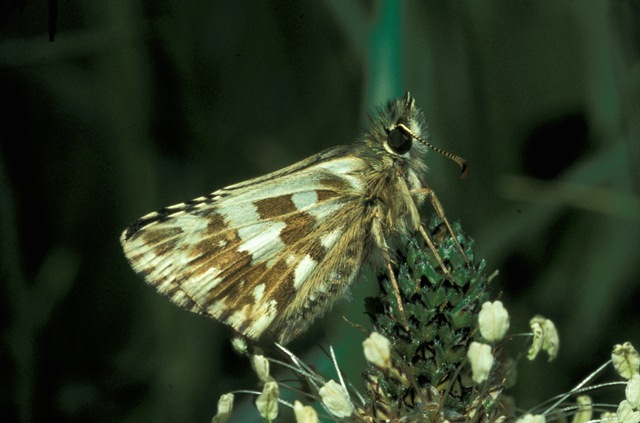
Photographs: Frits Bink ©.
Very small or small, wing length 13 (11-14) mm. The species is observed on fields of short grass with patches of bare soil. It occurred in the Benelux up to 1952 in the Flemish dunes, up to 1956 in Wallonia; however, after 2005 it was observed only in Luxemburg.
Adults of the first generation are on the wing in June and peak mid-June, those of the second generation from early-August until early-September and peak late-August. It occurs in sub continental and continental climates, amplitudes 7 to 16, and the required heat sum for the overwintering generation and the summer brood together is 750°d, the maximum tolerated 2000°d. This corresponds with climate windows of 24 weeks and 38 weeks.
The most northern locality is the Benestad Backar in Skåne, Sweden, where it occurs on the warm southwestern slope of a chalk grassland grazed by cattle. In France it occurs widely in the eastern part, in particular in the valley of the Rhône.
Ecological characteristics
Behaviour over time
Overwintering: small larva in second instar, hidden in a shelter of leaflets spun together in the litter layer.
Reproduction: oviposition starts after 5-6 days when the body contains 44 (32-56) eggs. Estimated potential reproduction twice as much.
Larval feeding periods: summer brood 6 weeks from end-June until early-August, overwintering generation 2 weeks in period early-September until early-October and in spring end-March until early-June.
Generations: always two.
Spreading of risk: not observed.
Life cycle: egg 20 (18-22) days; larva summer brood 40-45 days, larva overwintering generation 34 weeks; pupa 16 (13-18) days.
Life span of adult: short, 2 weeks.
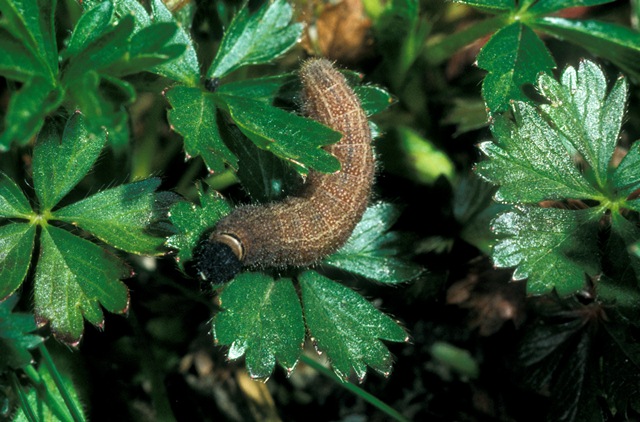 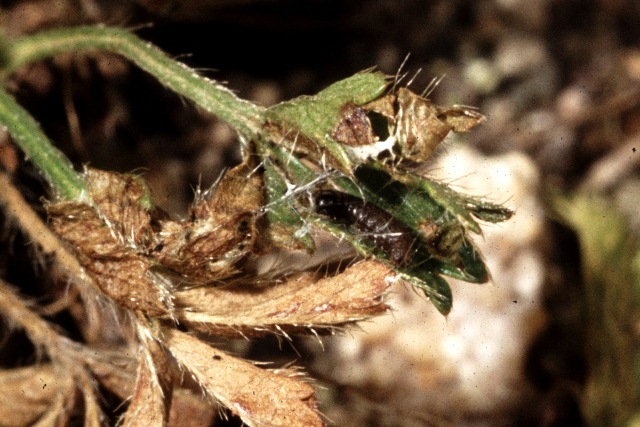
Photographs: Frits Bink ©.
Behaviour in space
From stay-at-home to migrant: stay-at-home, spatial requirement modest.
Finding a mate: male perches.
Orientation in the landscape: open landscape with short turf with some patches of bare ground.
Oviposition: on the underside of a leaf of the host plant.
Defence
Threats from other organisms: the larva hides in a shelter of leaves spun together.
Threats from the environment: at the northern limit of its distribution it can survive only in warm and sheltered places such as south facing cliffs and hill slopes.
Feeding habits
Adult: nectar, flowers of thyme are preferred.
Larva: feeds on mature leaves around its shelter.
Larval foodplants
Plant species: Rosaceae, several species of cinquefoil, e.g. Potentilla argentea, P. reptans, P. verna.
Journal
Rearing experiments based on a specimen from La Bruyère sur Rhône and from a locality near Brénaz, France:
3 September 1984: female from La Bruyère, laid 13 eggs.
4 September 1984: female from Brénaz, laid 39 eggs.
25 September: eggs were hatching.
30 September: larvae end first instar.
11 October: larvae seem to have entered diapause.
1 November: all larvae in L2 and in diapause.
Overwintered outdoors.
7 March 1985: taken indoors, some larvae were already active and had begun feeding and had constructed a new shelter.
9 May: first prepupa.
12 May: 5 full-grown larvae, one in moult L4-5.
20 May: 3 pupae.
27 May: first adult emerged, male.
30 May: male and female appeared.
Table 14-1. Results of dissections

Table 14-2. Collection and observation localities
F, Brénez 45° 56’N – 5° 43’E; 4 September 1984.
F, La Bruyère 45° 38’ 49”N – 5° 38’ 20”E; 25 August 1984, 3 September 1984.
S, Skåne, Benestad backar 55° 31’ 35”N – 13° 53’ 59”E; 23 August 1985.
Fig. 14-1. Pyrgus armoricanus, designed phenogram.
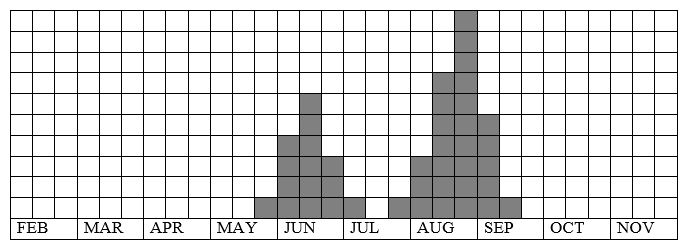
Fig. 14-2. Pyrgus armoricanus, habitat characteristics.
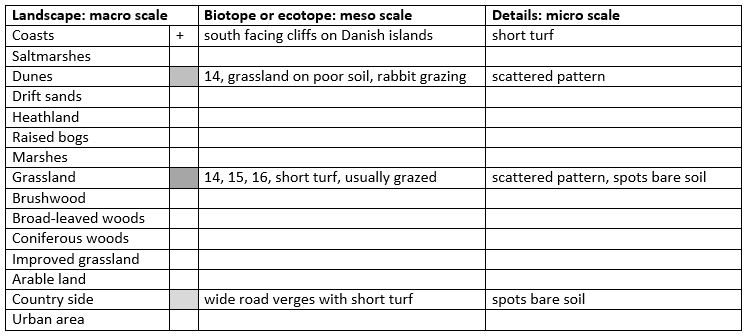
Fig. 14-3. Pyrgus armoricanus, climate matrix, heat-sums 750 (2nd gen) - 2000°d.
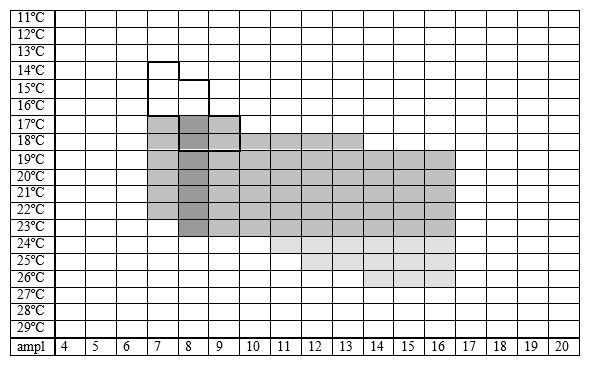
|










